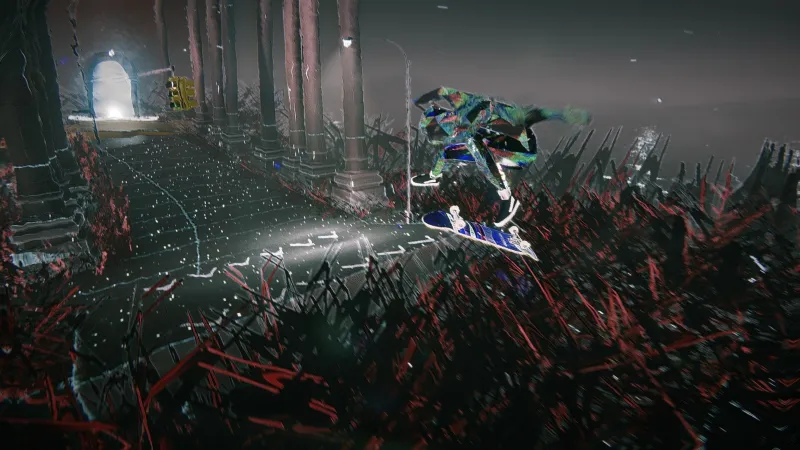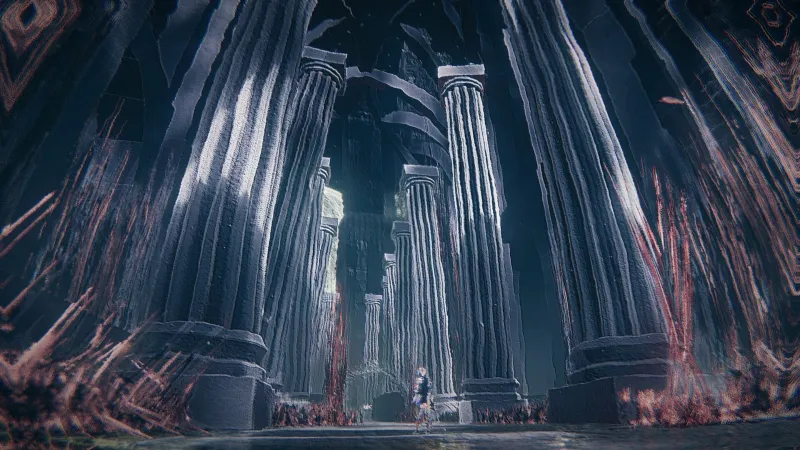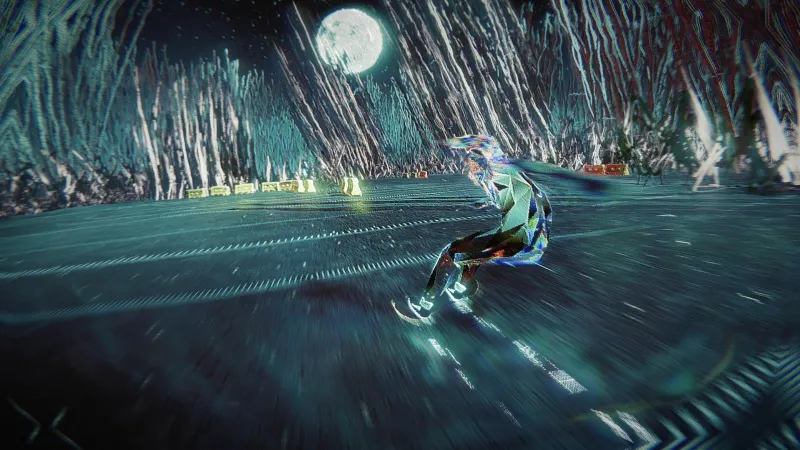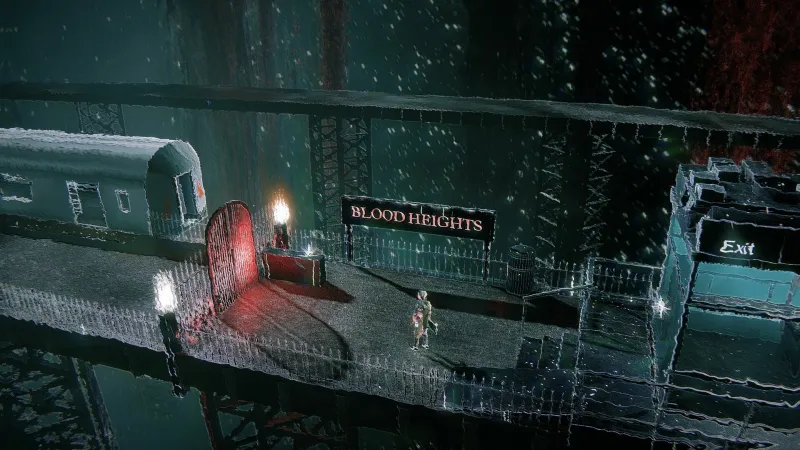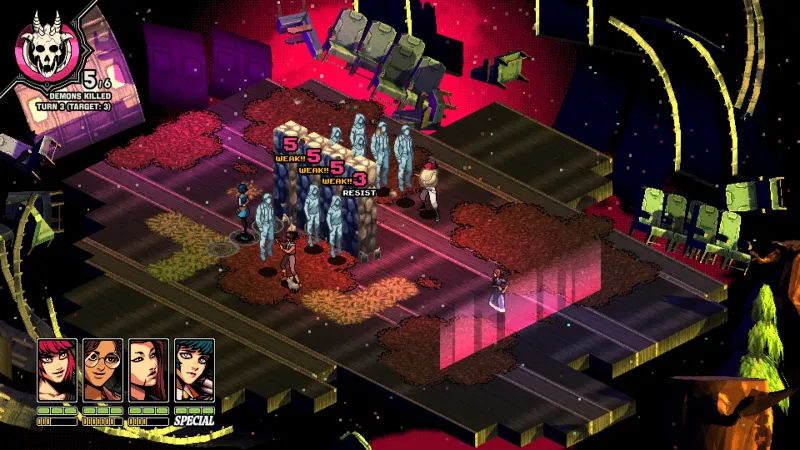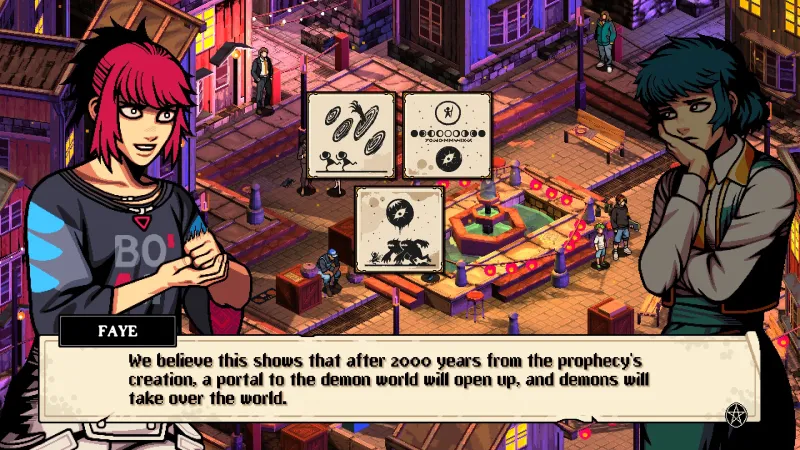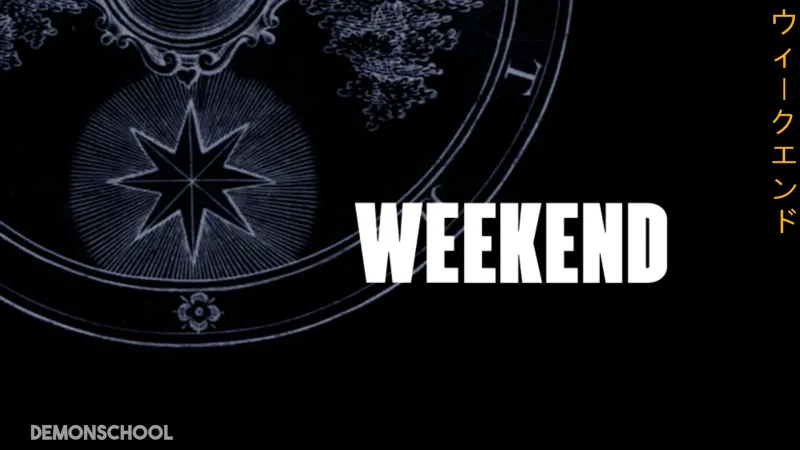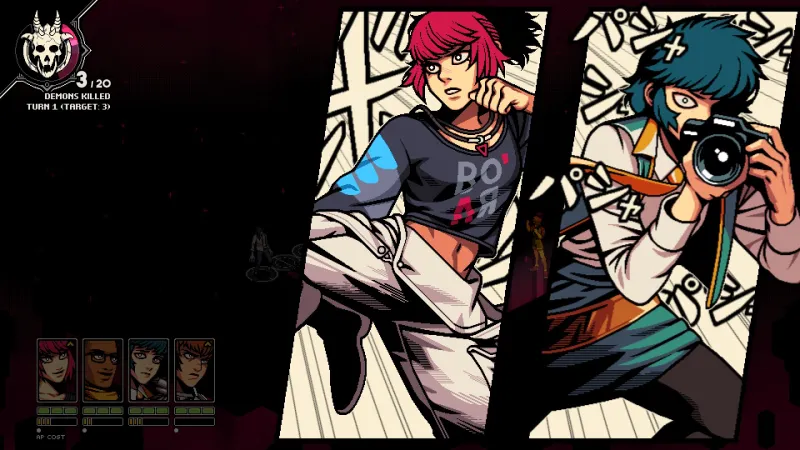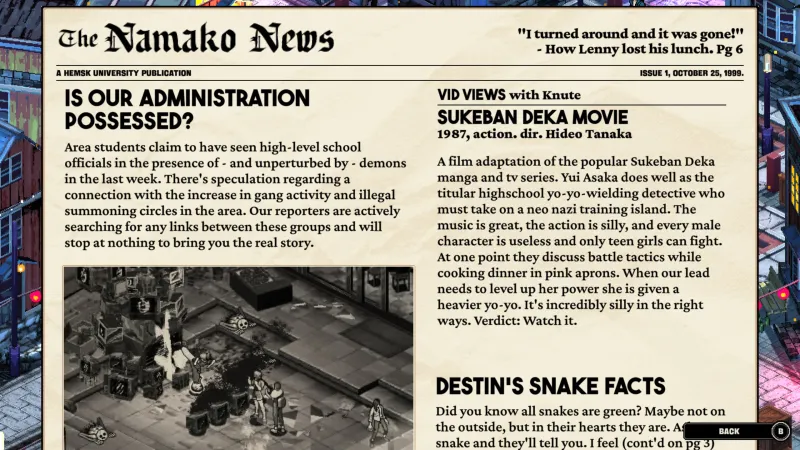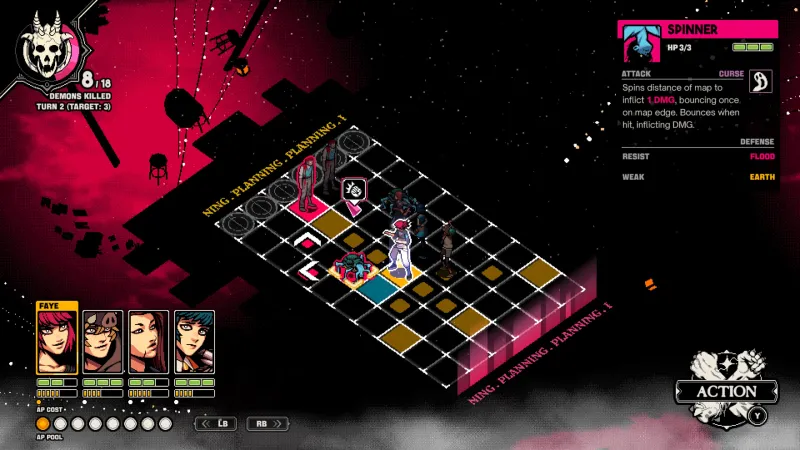Reading List
The most recent articles from a list of feeds I subscribe to.
Skate Story Review – Poetry In Motion
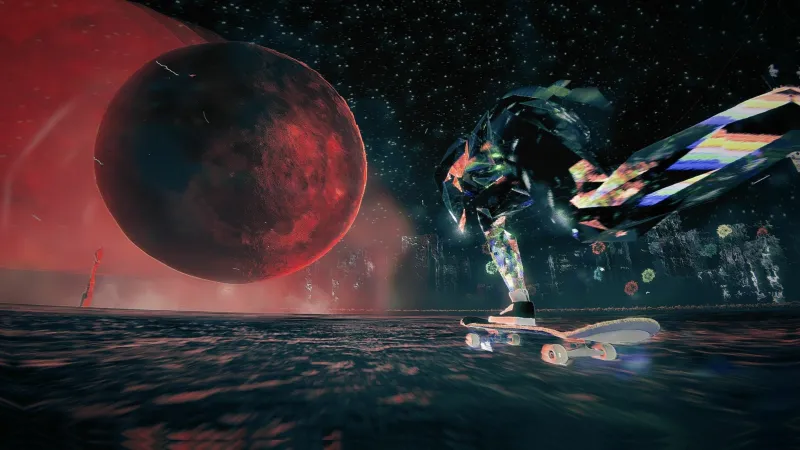
Reviewed on:
PlayStation 5
Platform:
PlayStation 5, PC
Publisher:
Devolver Digital
Developer:
Sam Eng
Release:
Rating:
Everyone
You are a demon made of glass and pain. Literally. Looking to escape from Hell, you sign a contract with the Devil to devour the moons illuminating the realm’s many layers. Your steed is a skateboard, a forbidden object you’ll use to kick and push through the Underworld, acting as the Silver Surfer to your own Galactus. Skate Story’s strange premise and surreal art direction are equal parts alluring and head-scratching. While the gameplay is a mixed bag, I enjoyed this fascinating blend of extreme sports and biblical poetry.
Skateboarding enthusiasts shouldn’t expect to catch big air on halfpipes or memorize a lengthy list of tricks. This is a story-driven experience drawing narrative inspiration from Dante Alighieri’s Inferno. The skater’s descent into the depths of a humorously bureaucratic Hell is laden with quirky, tortured souls I liked interacting with. The story itself is a mesmerizing and poetic onslaught of strange moments and dreamlike destinations every player will interpret differently, but I enjoyed how its effective throughline of hope and perseverance shines through. Best of all, you get to do a bunch of sick stunts along the way.
Skating is fun and easy to grasp thanks to simple and tight arcade-style controls. Moves are introduced at a good pace, allowing me to master relatively basic tricks like ollies, varials, grinds, and kickflips without overwhelming me. The small, skatepark-like hubs making up each layer of Hell are decent playgrounds to freely practice chaining moves to create combos. Small environmental interactions, like performing varials to cut grass or hitting ollies over special manholes, reward currency to purchase new skateboard cosmetics, such as decks and wheels. I appreciate how this structure encourages and rewards hitting tricks non-stop, but the hubs never offer more than a few simple ramps and railings, so they don’t remain exciting for long. By the second half, I lost the desire to mess around in these spaces and skated straight towards the more enjoyable main objective of filling my crystalline belly with moons.
Capturing a moon requires completing simple quests from the strange and tortured denizens. Finding cubes of wisdom for a sentient marble bust or helping a pigeon finish its manuscript by collecting scattered letters (a cheeky nod to Tony Hawk’s Pro Skater) aren't the deepest activities, but the sheer strangeness of the situations makes them more compelling than they would be otherwise. Skate Story thrives on its surreal vibes, chiefly its captivating art direction, which offers one of the most whimsical and imaginative interpretations of Hell I’ve ever seen. It trades grim fire and brimstone for a kaleidoscopic, cosmic film grain aesthetic that’s arguably worth the price of admission just to admire.
Gameplay picks up in the linear high-speed skating sequences where you traverse tricky courses and dodge obstacles across multiple checkpoints, often with a time limit. These segments are a blast thanks to a great sense of speed and how the psychedelic soundtrack swells as your skating becomes ever faster and more perilous; I strongly recommend wearing headphones. I would easily trade the comparatively flat hub exploration for a larger playlist of these white-knuckled sprints.
Quick restarts soothe the sting of a wipeout, and I love how satisfyingly the glass skater shatters into pieces after an errant trick. Less cool are the occasional collision issues where the Skater clips through objects and, although less frequent, becomes stuck inside them. The most egregious example was in the final scene of the game, when I became trapped under geometry during the cinematic finale and had to restart it a few times, dampening an otherwise cool moment.
Devouring moons is also a highlight. These encounters play out as celestial boss battles where nailing tricks drains the moon’s health bars based on the quality of the combo, acting as intense exams of your speed and dexterity. The bouts remain consistently entertaining as new wrinkles are introduced. One chaotic battle pitted me against the laser-shooting demons of the Underworld’s law enforcement agency. Another challenged me to chase the moon and nail tricks within its constantly moving shadow. These battles are strong exclamation points to a level, and I always looked forward to them. Thus, it’s a shame that there’s no way to replay previous chapters to enjoy these segments again; you can only load your most recent checkpoint or restart the game from scratch, wiping your original save data in the process.
As Skate Story’s credits rolled, I wasn’t totally sure what to make of it. Despite its imperfections, I knew I liked it, but I struggled to articulate why. I won’t pretend that every metaphor or symbol resonated with me or even made sense. It’s a deeply poetic journey, and the way to enjoy any good poem is to focus more on how it made me feel rather than any literal interpretation. In that sense, I’ll fondly remember the awe I felt admiring this imaginatively conceived underworld, the adrenaline rush of barreling through courses as a shining beacon of defiance and perseverance, and the thrill of hitting stunts so sick that entire celestial bodies shatter at my awesomeness.
Score: 8
Longtime Tekken Director And Producer Katsuhiro Harada Is Leaving Bandai Namco
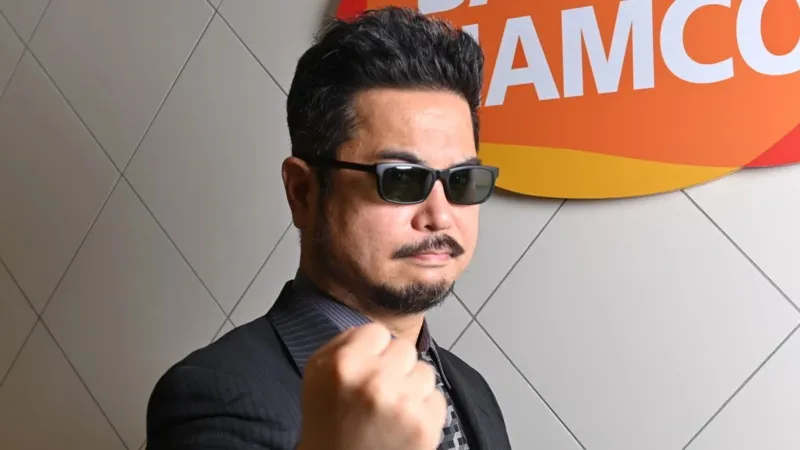
Longtime Tekken director and series producer Katsuhiro Harada has revealed he will leave Bandai Namco at the end of 2025. Harada, whose credits include not only Tekken but the SoulCalibur series, Pokkén Tournament, and more, said he wanted to reach the Tekken series' 30th Anniversary, which happened last December, as a major career milestone and is ready to move on.
He says he will leave Bandai Namco at the end of the year, but has been asked by the publisher to appear at the Tekken World Tour Finals at the end of January, and he will be attending as a guest. Alongside this news, Harada has released "TEKKEN: A 30-Year Journey – Harada's Final Mix" on SoundCloud, as he has always wanted to perform as a DJ at a tournament but never had the chance.
"So instead, I will be releasing – for the first and last time – a 60-minute Tekken DJ-style nonstop mix (DJ mix), personally edited by myself, together with this announcement," Harada writes in his announcement post on X. "Listening to it brings back many memories. Thank you again, sincerely, for all these years."
In Harada's announcement post, he talks about his love of arcade fighting games, his journey with Tekken and game development, and how he sought the advice of longtime mentor Ken Kutaragi, former CEO of Sony Computer Entertainment, commonly referred to as "The Father of PlayStation," and "received invaluable encouragement and guidance," noting that "his words quietely supported me in making this decision."
Alongside news of Harada's departure, the Tekken X account released a statement that says the following regarding Harada's upcoming leave:
"Katsuhiro Harada, who has long led numerous projects including the Tekken series, will be leaving Bandai Namco. This comes as the Tekken series finishes celebrating its 30th anniversary, a milestone he deeply contributed to as executive director and executive producer on the franchise. Harada-san is making an appearance and meeting with the Tekken community at the 'Tekken World Tour 2025 Global Finals' Last Chance Qualifier (LCQ) and Top 20 finals, held in Malmo, Sweden, on January 31 and February 1, 2026."
The statement also includes words regarding the future of the Tekken series, and they read as follows:
"To our fans, rest assured that we are fully committed to future development and content plans for Tekken 8. We will continue to take community feedback on the game and its content to heart to ensure that we uphold the vision and spirit built by Harada-san, dedicating our utmost efforts to ensure the legacy of the Tekken series continues as a fighting game franchise beloved worldwide. We express our deepest gratitude for Harada-san for providing us with vision and continued success over the years."
On that note, Harada mentions in his announcement that, "Over the past four to five years, I've gradually handed over all of my responsibilities, as well as the stories and worldbuilding I oversaw, to the team, bringing me to the present day," so it sounds like the Tekken series is in good hands.
Harada's Tekken journey goes all the way back to the beginning, where he was a voice actor for Marshall Law, Yoshimitsu, and Kunimitsu in the first Tekken. In Tekken 2, he voiced Marshall Law and Yoshimitsu once more. With Tekken 3 in 1997, not only did Harada voice Yoshimitsu and newcomer Forest Law, but he also directed the game. Since then, he's been a creative lead on the series through 2024's Tekken 8.
You can read Game Informer's Tekken 8 review here.
Do you have any favorite Harada memories? Drop them in the comments below!
Demonschool Review - Class Is In Session
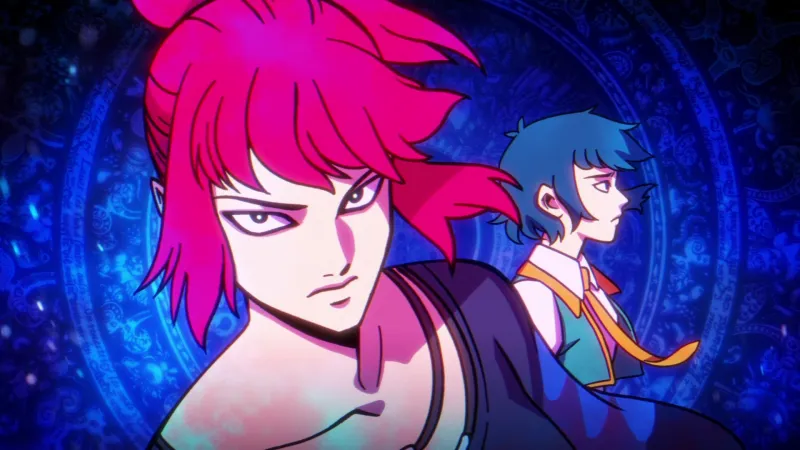
Reviewed on:
PC
Platform:
PlayStation 5, Xbox Series X/S, PlayStation 4, Switch, PC
Publisher:
Ysbryd Games
Developer:
Necrosoft Games
Release:
Rating:
Teen
School life can encompass a lot. There are classes to attend, extracurriculars to get involved in, and plenty of fellow students to meet and grow alongside. And if you're attending Demonschool, there's a fair bit of infernal conflict and apocalyptic terror to overcome, alongside your finals.
Demonschool's Hemsk Island is a lively college town filled with things to do: fishing, cooking, reading tea leaves, tossing coins in fountains, fixing up arcade cabinets, and dispensing of demons with tactical precision, all set amid a Y2K-fueled analog community. Demonschool feels like a lockbox of clever ideas. Though the breadth of side activities sometimes belies depth, it's the core tactical combat, audio-visual flair, and found-family story that helps Demonschool clear the course with great marks.
The semester of Demonschool starts with Faye, a new student descended from a lineage of demon hunters, on the ferry to Hemsk Island for university. There's a prophecy saying the world will end several weeks from now, and she's on the hunt to solve it. Along the way, you gather up a party around Faye, get weekly assignments, and learn more about why demons are popping up with increasing frequency.
The cast of characters gathered throughout the course of Demonschool is an eclectic, fun bunch. There were some clear favorites for me over others, either depending on their particular skillset or just general vibes, but each one stands out on their own. Aina, the cool, tough daughter of a crime lord is probably my favorite, but others such as the beastmaster-like Mercy and Henk, who literally drops desks and other items on the field, all offered unique options for my party, as well as fun social bonds to build up between major quests.
It's a shame, then, that it takes a bit for Demonschool to get to that point. The first few in-game weeks of Demonschool are slow, as Faye and friends take time to start growing their numbers. This, combined with a generally high frequency of battles, means you're tackling fights and hanging out with the same set of companions for a spell.
When it gets going, though, the tactical combat sings. In description, Demonschool's tactics sound complex; you have a planning phase, in which you spend increasing amounts of fixed points to move and attack with your chosen party. Movement happens in straight lines and diagonals, so combat often tasks you with threading moves together, hopping from one foe to the next. All the while, you're trying to kill enough demons to fill up the meter and reach the opposite side of the battlefield, to seal them all away and end the fight, before any demons reach your side of the field and crack the barrier, spilling out into the real world.
Add in some specific rules around moving and attacking, as well as little adjustments like side-stepping, and Demonschool can be a lot to wrap your mind around, tactically. Necrosoft's taken a very direct approach – numbers are low, as are health bars, and it makes combat feel punchy, fast, and sometimes dangerous. That's why the planning phase works so well, though. Nailing a turn where you sweep through a horde of demons, pulling off big manga-panel cut-in combo attacks and wiping away the field before sealing it, is an electric reward for solving the tactical puzzle.
The tools available ensure you have interesting options for solving too, and I enjoyed when Demonschool forced me to stop using my go-to A-team and experiment with more unconventional characters' toolkits. The focus on movement and effects, rather than only increasing base damage numbers, means characters do cooler things: augment their attacks to fire in different patterns, add poison or burn to their strikes, or let healers reduce the damage output of enemies with their restorative measures.
Though the information is not always easy to uncover, managing your party's skills and abilities lets you craft a crew that can do some really wild stuff. It all culminates in the boss fights, which are the crowning highlight of Demonschool. Making bosses for tactics games can be tricky, but Necrosoft makes every major encounter memorable and exciting. Bosses add new dangers, push you in ways normal fights don't, and can even warp the battlefield and game mechanics in ways you'll have to adapt to on the fly. A particular fight on a circular plane lived rent-free in my head for days after clearing it.
Some fights were a bit perfunctory, but honestly, even the ones that took me just a minute or two to clear felt like I was exhibiting mastery over a system that once intimidated me. Like acing a final, Demonschool lends a notion of accomplishment.
The less-engaging side is the extracurricular activities, where Faye can hang out with characters or take part in minigames. Fishing, karaoke, cooking, and more add a lot of things to do, and some help with boosting social rapport for the ever-growing cast of characters. But they become repetitive too fast, especially if you're trying to max out bonds with specific companions. I slowly lost interest in them over the course of the 30 or so hours I spent working my way through Demonschool. There are some side quests, as well, but they usually encompass talking to a few people, fast-traveling between zones, and a battle or two.
Side quests and activities do, at least, encourage you to wander the island and take in the sights and sounds. Demonschool has a wonderful blend of sprite-work and low-poly, PS1-era graphics that frame its world perfectly, alongside an absolutely masterful soundtrack. Every battle, the music drops to a subdued beat for the planning phase and then naturally slides up to an intense tune when you hit "go" on the fight, then back down for the next round. The turn-of-the-21st-century vibes are immaculate in Demonschool; it looks and sounds unlike anything else you'll play this year, in the best way.
Demonschool is infectious. The tactical clicks as I fired off a masterful turn that wipes out swathes of demonic creatures kept me coming back, day after day, week after week. Each new character pushed me in new directions, opening new horizons, while also luring me into new bonds and relationships. Though it takes a while to get going and falls a bit short in its side activities, Demonschool still manages to be a haunted PS1 disc of tactical joy.
Score: 8
The Games You Should Play This Weekend – December 5
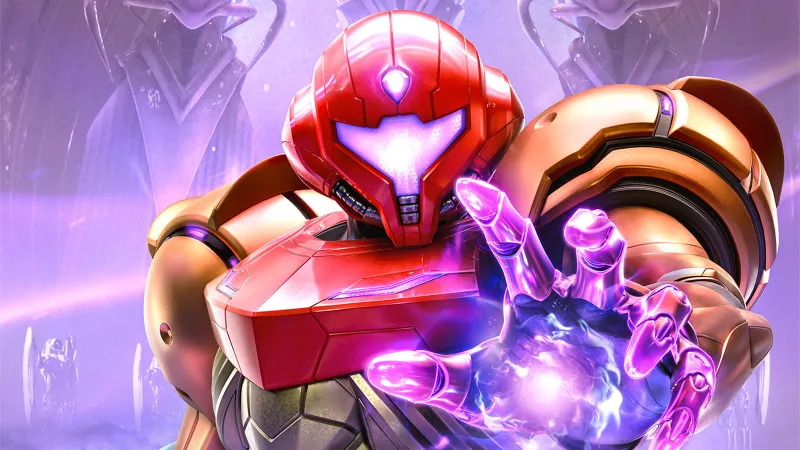
It's the first Friday of December, which means we're one step closer to the Winter holidays – whatever and however you celebrate, something tells me video games are involved, along with some relaxation, good food, great friends and family, and maybe some more video games. As the year begins to wind down, our backlogs are looking a bit more manageable and I wager I'll look at mine, download multiple games, and touch roughly none of them this month.
Anyway, it's been a busy week here at Game Informer! We wrapped up the behind-the-scenes work on our special oversized end-of-year issue, and if you aren't already a subscriber, head here to ensure that issues hit your mailbox. We also published reviews for games like Metroid Prime 4: Beyond, Marvel Cosmic Invasion, and Octopath Traveler 0, and covered the week's biggest news, too!
Before we get into the staff's weekend recommendations, here's a recap of the biggest stories of the week:
- Metroid Prime 4: Beyond Review – Worth The Wait
- Marvel Cosmic Invasion Review – Making The Dream Work
- Octopath Traveler 0 Review – Going From Zero To Hero
- Steam And The Epic Games Store Refuse To Sell Indie Horror Game Horses – Here's Why
- Paramount Announces A New Sonic Universe Film For Holiday 2028
- Helldivers Movie Lands Fast And Furious Director Justin Lin
- Sony Set To Publish Four-Player Co-Op Shooter Developed By JJ Abrams' Bad Robot Games
The Games You Should Check Out This Weekend
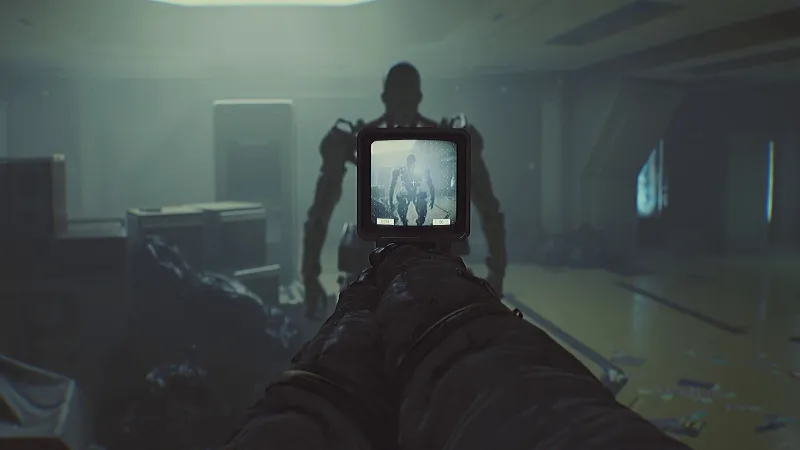
Routine
Though I'm familiar with Routine's long journey to launch, I wasn't too keyed into what the actual game was at all before hopping into it this week to review it for Game Informer. I'll have a review up next week for it – I believe I'm nearing the end – but I just want to take this article to gush a bit about it. It is loosely a survival-horror game that really places you into the shoes of the engineer you control, who must discover what disturbing and mysterious event has taken place on a now-defunct lunar station. Unlike other games in this genre, you're not really there to fight back against whatever lurks in this space station's empty hallways – and there are certainly things lurking – but instead, you're there to tinker with computers, open doors, read documents and emails, and use your C.A.T. handheld device to learn more about the station and maybe, just maybe, escape, too.
I can't overstate how tactile Routine is – you walk around and tinker with computers, your C.A.T. device, documents, buttons, and more. And everything in Routine is obscured in mystery and bathed in a beautiful 1970s visual style reminiscent of Alien, with the crunchiest film grain you've ever seen. If you like being afraid and alone in space, and if you also like tinkering with an intensely detailed environment around you to solve puzzles and progress deeper into the location, Routine is a game you should check out this weekend.
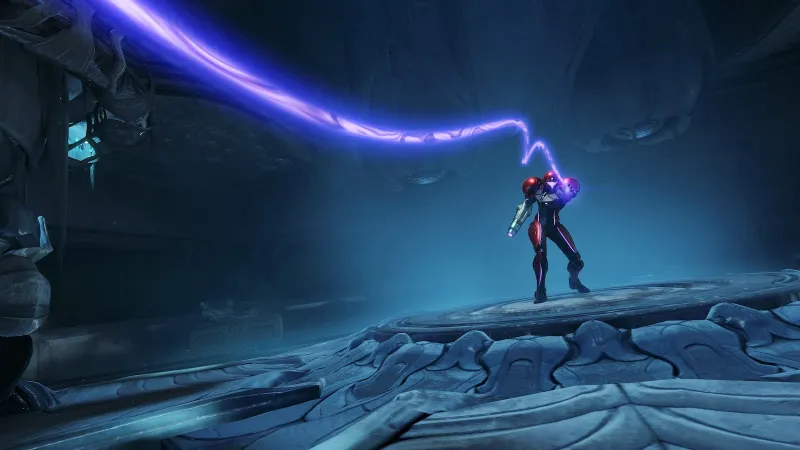
Metroid Prime 4: Beyond
Eighteen years after the release of Metroid Prime 3 and eight years after the announcement of Metroid Prime 4, the game is finally here. The wait has been long, but the resulting experience is worthwhile. It does not radically reimagine what has, frankly, worked about series since the original Metroid Prime, but it delivers what I wanted from a Metroid Prime experience. I actually ended up playing it through twice back-to-back – an extreme rarity for me. Make sure to back up your save at the point of no return if you haven’t achieved 100% (and you want to), and make sure to grab as many green crystals as possible over the course of the game, so you don’t have to spend time building your bank right at the end. But otherwise, you are in for a classic search-action experience absolutely dripping with alien atmosphere. Read my review here.
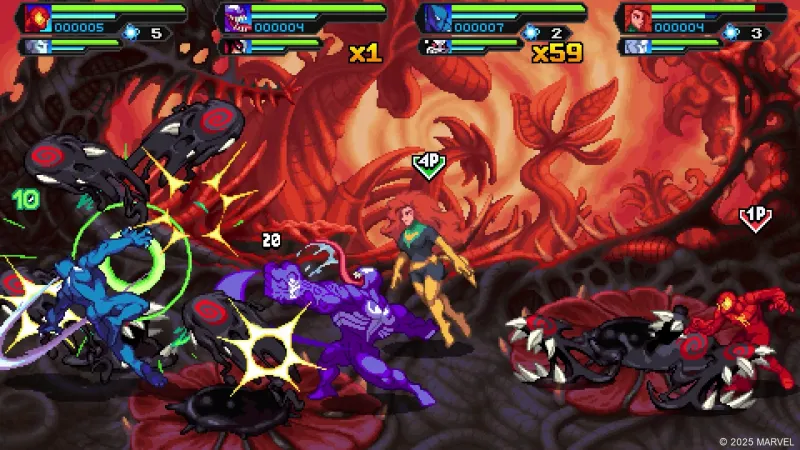
Marvel Cosmic Invaison
It’s Friday, which means you may be calling up the homies to plan some weekend gaming. If your friend group adores comics and the act of relentlessly punching things in the face, Marvel Comic Invasion is a strong recommendation. The four-player retro-inspired beat ‘em up spices up the genre with fun tag-team gameplay, in which each player controls two heroes they swap between à la Marvel vs. Capcom. With deeper combat mechanics than most brawlers, beautiful sprite work, and a great soundtrack, Marvel Cosmic Invasion is a great excuse to catch up with friends while blasting through the video game equivalent of a good Saturday morning superhero cartoon.
Getting friends together on the couch for a local co-op session rocks, but if that's not an option, the excellent drop-in/drop-out online play is a great alternative. Plus, even if the person hosting the online lobby needs to exit the game, the session continues uninterrupted. This is perfect for dealing with any unexpected adult responsibilities that arise, like teaching your dog how to read or taking your child to the vet. For a better idea of what Marvel Cosmic Invasion has to offer, you can read my review of the game here.
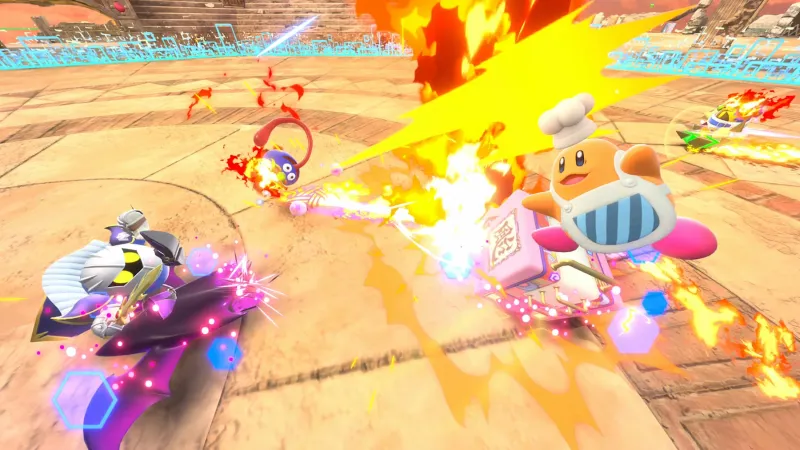
Kirby Air Riders
Kirby Air Riders is a fascinating game that more closely follows the footsteps of Super Smash Bros than Mario Kart. Director Masahiro Sakurai's distinctive style, complete with hundreds of achievements, bright animations, and familiar menu designs will bombard players from the game's opening moments. Once you actually get in a race, you'll find that the game is far more complex than at first glance. Its two button control scheme masks the extremely varied riders and machines, each with nine stats that add together when you pick one of each. It also has a wealth of modes, from the standard Air Ride to the party-friendly City Trial to the solo Road Trip. It's not a game for everyone, as it's a bit of an acquired taste, but coffee is an acquired taste and I drink it every day; if the game sounds appealing to you, you're going to love it.
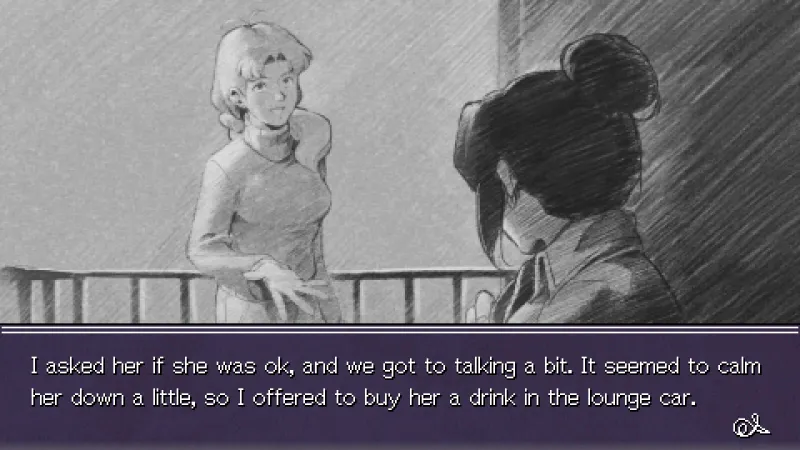
Detective Instinct: Farewell, My Beloved
Hayes Madsen published a piece on Inverse the other day recommending a game I had never heard of, but as soon as he used the words "Ace Attorney," something dormant in my brain activated and I purchased it without a second thought. Detective Instinct: Farewell, My Beloved is a game very much inspired by my favorite capcom series, with DS-era pixel art and a mystery-driven narrative, but it's very much its own concept. As a college student on a study trip in a foreign country, your classmate befriends a mysterious woman on the 3-day train ride home, only for that woman to disappear hours later. Nobody claims to know who she is, so the two of you investigate. What follows isn't as gripping as my favorite Ace Attorney cases, especially since the stakes are relatively low at the outset, but like any good mystery, it grows over time. By the end of my 4-hour playthrough, it was a train ride I was glad to have embarked upon, and certainly scratched the investigative itch I'd been hoping for. It's currently available on Steam and Switch.
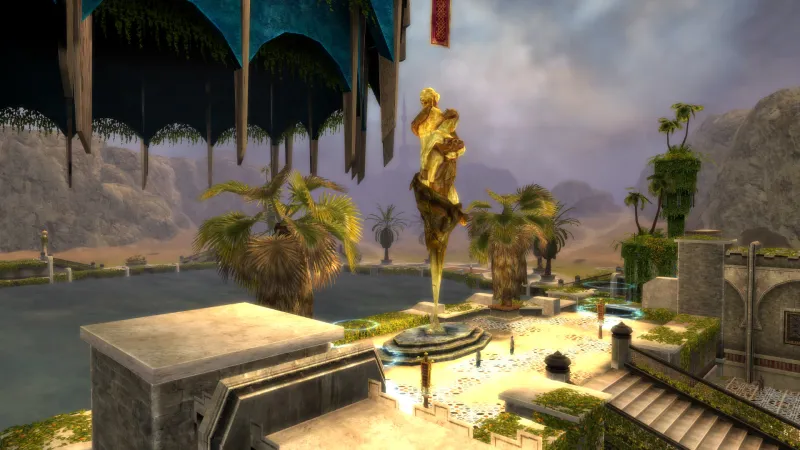
Guild Wars Reforged
I never really got the chance to play MMOs when I was younger. Sure, I spent a lot of time on the PC, but it's easier to convince your parents to buy a single Battle Chest or multi-disc box than a regular subscription. So when ArenaNet suddenly dropped an updated version of the original Guild Wars via Reforged, I was curious to see what I'd missed.
In the span of an hour or two, I undertook menial tasks of heroism that would be better described as mutual charity. I fought worms and crawlers for eggs. I escorted NPCs through dangerous areas. In the starting town, I partied up with someone named "Zerosugar Bajablast" to complete a quest.
There is a quaint simplicity to this era of MMORPG, where a combination of scale and open skies communicates grandeur where tangible objects cannot. Interfaces seem intentionally minute and finicky. Compared to my hours upon hours in Final Fantasy XIV's Eorzea, it is quaint. But quaint's what I want right now, to be honest; a world that's just a little sandbox of adventures to explore with friends. And seeing so many people logging on and talking about how excited they are to start anew, with all these new players flooding in, is heartwarming. The years may have passed on by, but Guild Wars has retained the charm and warmth, thanks in large part to its community, including Zerosugar Bajablast.
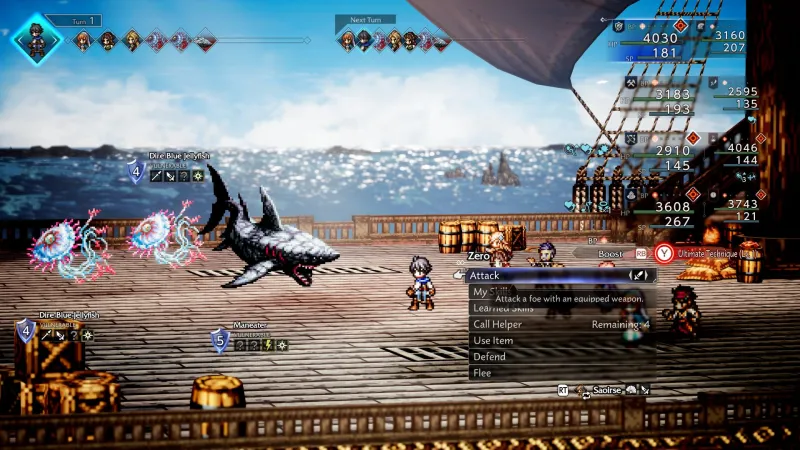
Octopath Traveler 0
Don't be put off by the fact that Octopath Traveler 0 is a rebuild of content that originally appeared as part of a gacha-oriented mobile title. The developers leveraged the vast amount of content created for that mobile iteration, but reworked the entire experience to be a premium JRPG game that offers many dozens of hours of turn-based battles, gorgeous retro visuals, and incredible flexibility to customize and build both a party of characters and a town that acts as home base. This is a rewarding and fun experience that advances many of the ideas that were already strong in prior Octopath games. If you've been hungry for a throwback to the days of Chrono Trigger or the early Final Fantasy games, this should be on your radar.
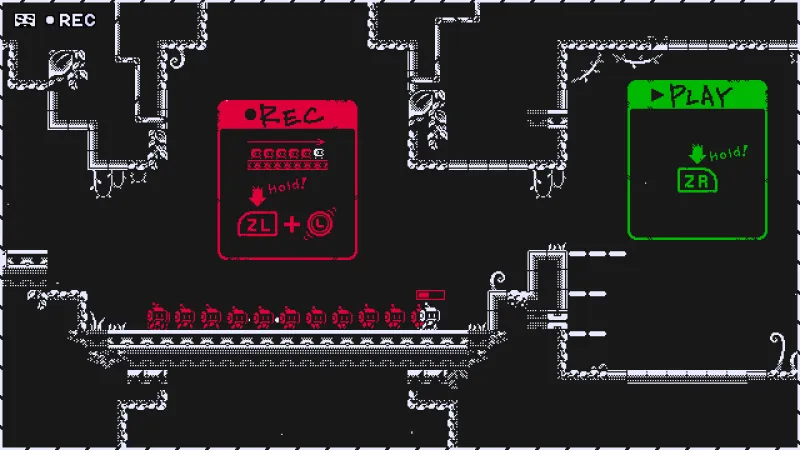
MotionRec
MotionRec is a 1-bit puzzle platformer that has quickly become one of my favorite 2025 games. Playing as a small, adorable robot, you solve puzzles by pressing a record button, capturing a string of motions, and then playing back your movements from a different point of origin, often in succession to bypass spikes, lasers, or particularly long gaps. MotionRec is full of tricky puzzles and ample light-bulb moments as you collect a series of musical notes throughout any one level. It's an amazing little game. Don't miss it!
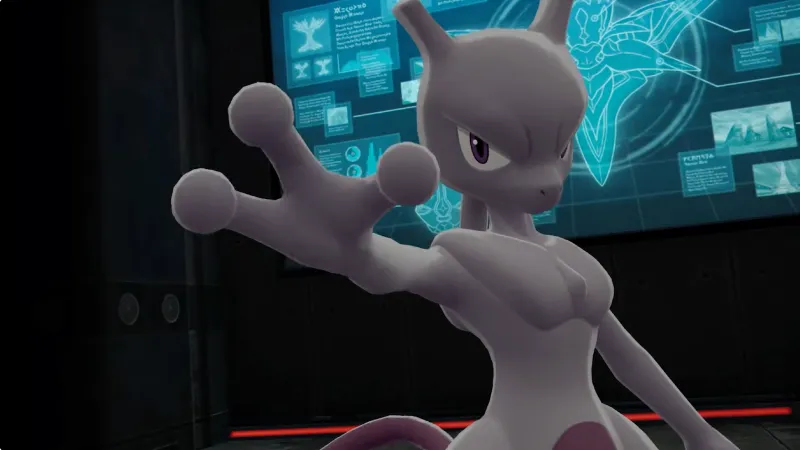
Pokémon Legends: Z-A – New Side Missions
You already know Pokémon Legends: Z-A is a fun game (and if you don't, read Brian Shea's review here), and I'm not here to repeat that sentiment. However, I do want to take this article to highlight some of the things I recommend hopping back into the game to complete if you haven't touched it in a minute.
If you connect to the internet to receive Mystery Gifts, you can claim a Diancite Stone, a Mewtwonite X stone, and a Mewtwonite Y stone. Once you've claimed those two Mystery Gifts (you receive the Mewtwo stones at the same time), two new side missions will be added to Lumiose: Shine Bright Like A Gemstone and Project M. Complete the former to encounter Diancie, and complete the latter to encounter Mewtwo, allowing you to add both of these legendary Pokémon to your party. And with the stones you received from Mystery Gift, you can Mega Evolve both of them!
Elsewhere in the game, if you haven't hopped into the online ranked mode battling yet, you should! You don't even have to be good – just play 5 to 10 rounds until you reach Rank S, and by that point, you will have received the Greninjite, Delphoxite, and Chesnaughtite stones as rewards for ranking up. These allow you to Mega Evolve Greninja, Delphox, and Chesnaught, respectively. There's no word on whether these rank rewards will remain after the current Season 3 of ranked battling, so I recommend hopping in asap to win these stones.
Metroid Prime 4, Marvel Cosmic Invasion, and More | The Game Informer Show

Winter's here, the snow is falling, and the last big games of 2025 are debuting. It's a packed week on The Game Informer Show, as Kyle Hilliard discusses his review of Metroid Prime 4: Beyond and Marcus Stewart dives into the super-sprites of Marvel Cosmic Invasion.
After the break, Charles Harte joins the dynamic duo to discuss more Kirby Air Riders, as well as spotlight a cool new indie mystery called Detective Instinct: Farewell, My Beloved. Don't turn the dial on 2025 yet, as the year's clearly got a few more heaters left.
The Game Informer Show is a weekly podcast covering the video game industry. Join us every Friday for chats about your favorite titles – past and present – alongside Game Informer staff and special guests from around the industry.
Watch the video version here:
Listen to "Metroid Prime 4 and Marvel Cosmic Invasion Review" on Spreaker.Follow our hosts on social media:
- Marcus Stewart (@marcusstewart7)
- Kyle Hilliard (@kylehilliard)
- Charles Harte (@chuckduck365)
Jump to a specific discussion using these timestamps:
- 00:00 - Intro
- 7:08 - Metroid Prime 4 Beyond
- 32:58 - Marvel Cosmic Invasion
- 52:08 - Kirby Air Riders
- 1:11:13 - Detective Instinct: Farewell, My Beloved
